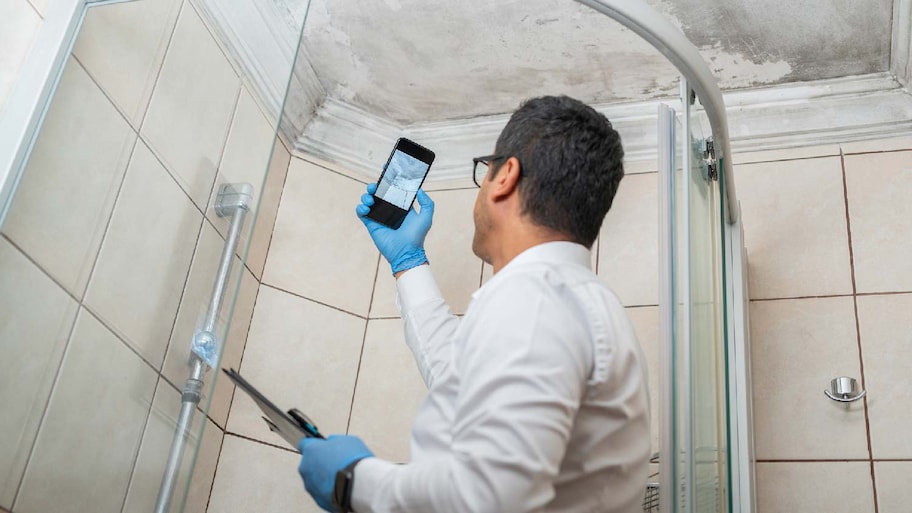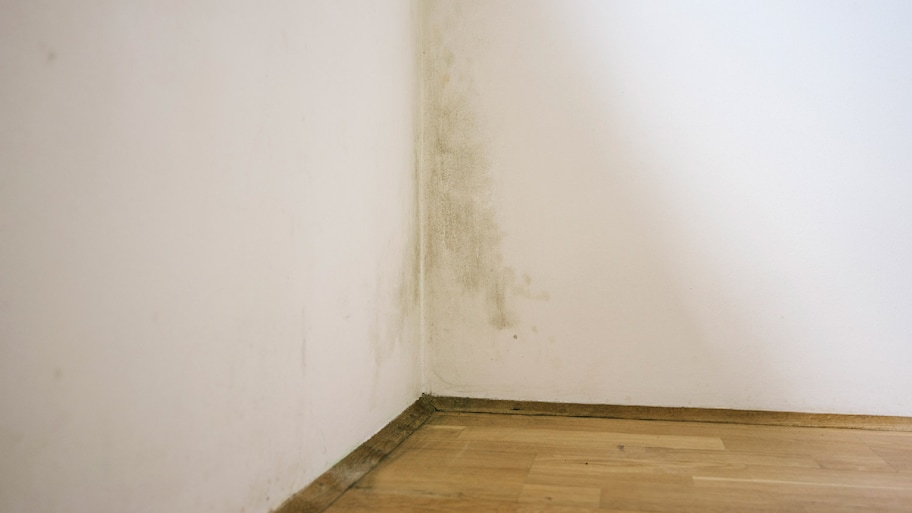Green Mold vs. Black Mold: What’s the Difference?
It doesn't matter if it's green or black, any color mold has got to go


Highlights
Green and black molds are from different species.
Any type of mold, no matter the color, can be harmful to your health.
Removing green or black mold may require a professional mold remediation company.
If it's fuzzy and green, it's harmless, right? Maybe not. While people often assume that black mold is the dangerous one, all types of mold can be hazardous to your health. Read on to learn more about green mold vs. black mold, and what to do if you see anything growing in your home.
Black vs. Green Mold: Overarching Differences

Color is just one obvious difference between black and green mold. The molds usually come from different species and prefer different growth media.
| Type of Difference | Green Mold | Black Mold |
|---|---|---|
| Species | Penicillium | Stachybotrys |
| Growth Habitats | Food, walls, carpets | Food, wood, wet areas |
| Health Risk | Asthma, allergies | Asthma, allergies |
| Toxicity | Can be toxic | Usually toxic |
| Removal Methods | Varies | Varies |
Species
A notable difference between green and black molds is the species of mold. Green molds are usually from the following genus:
Penicillium
Cladosporium
Aspergillus
Black molds are often from the following genus:
Stachybotrys
Alternaria
Cladosporium
Aspergillus
Note that the last two genus of both green and black mold are the same. That's because there are numerous species within each genus, and the color of each one may be different. It's also worth noting that a single species of mold may have different colors depending on where it's growing.
When people mention black mold, they are most likely talking about Stachybotrys chartarum, which is known for its toxicity. Stachybotrys chartarum can be greenish or black in color, according to the Centers for Disease Control and Prevention. While it may be the most famous black mold, it's not the only type of black mold.
Growth Habitats
Everyone has their preferences, and mold is no exception. Some types of mold thrive on foods, including starchy items like bread. Molds in the Penicillium genus prefer to grow in cool conditions, such as soil, while Aspergillus niger, another type of black mold, often grows on the skins of fruits and vegetables.
Stachybotrys chartarum thrives in habitats with a high cellulose content, such as wood, paper, and gypsum board. Basically, the structure of many modern homes is an ideal habitat for Stachybotrys chartarum.
Health Risks
Molds of all types and colors can make people sick. Some people are allergic to mold and will have a reaction if they come into contact with mold or mold spores. Allergic reactions to any type of mold can include sneezing, watery eyes and a runny nose. Some allergic people develop a skin rash if they touch mold.
If you have asthma and a mold allergy, exposure to black or green mold can trigger an asthma attack.
Even if you aren't allergic to mold, you may experience some health effects if exposed to it, as mold is also an irritant. Green or black mold can irritate your skin, nose, throat, lungs, or eyes, triggering symptoms that may look like an allergic reaction.
For people who are immunocompromised, or who have a chronic respiratory disease, exposure to mold can lead to infection. A mold in the Aspergillus genus is responsible for infections in susceptible individuals. Mold infections are very rare, but can be life-threatening.
Toxicity

Some types of mold produce toxins, called mycotoxins. Mycotoxins are a type of poison that can cause harm if you inhale, eat or touch them. Long-term exposure to mycotoxins can increase cancer risk.
Black mold gets a bad rap regarding mycotoxins, but it's not the only type of mold that can be toxic. Green molds can also produce mycotoxins. No matter the color of the mold, act with care if you see any growing in your home.
Removal Methods
How you remove mold depends on the size of the infestation. The first step may be to hire a local mold inspection company to examine your home and determine the type of mold you have.
An inspector can recommend how to proceed, whether you can tackle the problem yourself or need mold remediation. If it's okay to remove the mold on your own, wear eye protection, a mask, and gloves as you work, and be careful not to mix chemicals, such as bleach and vinegar, during the removal process.
Frequently Asked Questions
Several factors affect the color of mold, including humidity levels, age of the mold, and amount of light it receives. A patch of mold that starts out green may darken and turn black as it ages. A species of mold may be green if growing in one environment, but be black in another environment. Color usually isn't a reliable way to determine mold species or risk.
Areas of your home may provide an ideal environment for green or black mold. Most molds love moisture and will thrive in wet or damp areas. Some types of mold, such as Stachybotrys chartarum, grow well on materials commonly used in homes, such as gypsum board and wood. Mold may also grow in areas where there are leaks, such as in bathrooms, kitchens, or basements.
Bleach will kill green and black types of mold, but isn't always the best choice. Vinegar can be a more effective mold killer, as it can penetrate surfaces, killing mold beneath. If you have a large area of mold, it's best to hire a mold remediation company to take on mold removal.
